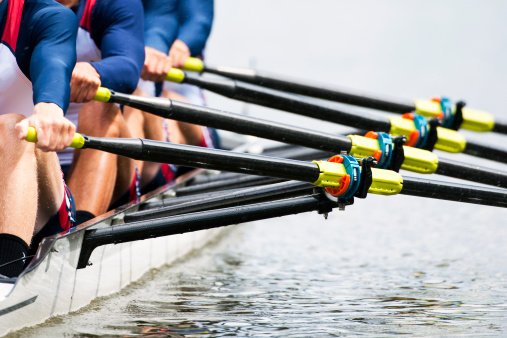General Rules of Sweep Rowing
Are you aware of the fundamental principles that govern sweep rowing? Understanding the general rules and guidelines is crucial for a successful and safe rowing experience. From equipment requirements to proper oar handling techniques, there are key aspects that every rower must grasp. By following these rules diligently, you can enhance your rowing skills and contribute to a more efficient and synchronized team performance.
Rowing Equipment Requirements
To participate in sweep rowing, you must ensure that your equipment meets specific requirements. Proper equipment maintenance is crucial for your safety on the water and the longevity of your gear. Begin by regularly inspecting your oars for any signs of wear or damage. Check the handles, blades, and shafts for cracks, splinters, or loose parts. It is essential to address any issues promptly to prevent accidents during rowing sessions.
When it comes to oar storage and transportation, there are key considerations to keep in mind. Store your oars in a secure and dry location to prevent warping or damage. Make sure they are not leaning against anything that could bend them. During transportation, secure your oars properly to avoid shifting or falling during transit. Utilize padded oar bags or racks to protect them from scratches or dents.
Prioritize safety by always using oarlocks that are in good condition and functioning correctly. Faulty oarlocks can lead to instability and potential accidents on the water. Additionally, familiarize yourself with the weight and balance of your oars to ensure proper handling and maneuverability while rowing.
Proper Oar Handling Techniques
Inspecting your oars regularly and maintaining proper handling techniques is essential for safe and effective sweep rowing. Oar placement and balance are crucial for optimizing your strokes. Before launching, ensure that the oars are correctly positioned in the oarlocks, with the spoons facing the correct direction. An imbalance in oar placement can lead to steering issues and inefficient rowing.
Grip strength and control play a significant role in your performance on the water. When gripping the oar, avoid gripping too tightly as this can lead to fatigue and blisters. Find a balance where you have a secure grip on the oar without unnecessary tension. Control over the oar is essential for precise movements during the stroke. Practice feathering and squaring the blade smoothly to maintain control over the oar throughout the stroke cycle.
To enhance your oar handling techniques, focus on drills that target specific aspects of your stroke. Work on exercises that improve your feathering technique, blade placement, and overall control of the oar. By dedicating time to refining your oar handling skills, you can elevate your performance and efficiency on the water. Remember, mastering proper oar handling techniques is a continuous process that can lead to significant improvements in your sweep rowing abilities.
Boat Safety Guidelines
Regularly conducting safety checks on your boat is imperative to ensure a secure and risk-free rowing experience. By following boat safety guidelines, you can significantly reduce the chances of accidents and injuries. Here are some essential safety measures to incorporate into your rowing routine:
| Boat Safety Guidelines | Description |
|---|---|
| Emergency Protocols | Familiarize yourself with the emergency procedures specific to your rowing location. Ensure all rowers know how to respond in case of emergencies such as capsizing or collisions. Conduct regular safety drills to practice these protocols. |
| Safety Drills | Regularly practice safety drills to enhance your team's preparedness. These drills should include actions like quickly exiting the boat, signaling for help, and performing self-rescue techniques. By rehearsing these drills, you can react swiftly and effectively in real emergencies. |
| Injury Prevention | Prioritize injury prevention by wearing appropriate gear such as life jackets. Ensure all rowers have properly fitted life jackets before setting out on the water. Additionally, maintain proper form and technique during rowing to minimize the risk of strains or sprains. |
Adhering to these boat safety guidelines not only enhances your overall rowing experience but also promotes a culture of safety within your team. Remember, safety should always come first to enjoy the sport to its fullest potential.
Rowing Stroke Mechanics
Ensuring proper rowing stroke mechanics is fundamental to optimizing your performance and efficiency on the water. To achieve this, focus on power application, recovery timing, blade angle, and catch placement.
Power application is crucial in generating boat speed. Initiate the drive phase by pushing with your legs first, followed by engaging your core and back muscles. Smoothly transition this power through your arms and into the oar handle. Concentrate on maintaining consistent pressure throughout the stroke to propel the boat effectively.
Recovery timing is as essential as the drive phase. Once you've completed the power application, allow the boat to run freely by feathering the oar and releasing it from the water. This phase should be quick yet controlled, setting you up for the next stroke.
Blade angle plays a significant role in maximizing the efficiency of each stroke. Ensure that your blade is fully buried in the water at the catch, utilizing the surface area to move the boat. Proper catch placement involves entering the blade cleanly into the water at the catch, avoiding splashing and ensuring a smooth transition into the drive phase.
Steering and Navigation Tips
When navigating a rowing shell, it is crucial to maintain a steady course by utilizing proper steering techniques and paying close attention to environmental factors. Team communication is essential for efficient navigation. Clear and concise communication among rowers is key to ensuring everyone is aware of the intended course and any necessary adjustments.
Effective steering techniques are fundamental in keeping the shell on course. To steer accurately, the coxswain or the rower responsible for steering must use the rudder efficiently. Small, subtle adjustments to the rudder can have a significant impact on the boat's direction. Additionally, understanding how factors like wind, current, and waves affect the shell's movement is crucial. Anticipating these environmental elements can help in preemptively adjusting the course to maintain efficiency.
Strategies for navigating tight turns or narrow passages require coordination and skill. When approaching a turn, rowers must work together to execute the maneuver smoothly. Communication signals such as verbal cues or predetermined hand signals can aid in signaling when to adjust the course. Properly timed adjustments and coordinated efforts can make all the difference in successfully navigating challenging areas.
Communication Signals on the Water
When on the water, precise communication signals are crucial for effective rowing coordination. Understanding the importance of these signals ensures seamless teamwork and maneuvering. Familiarize yourself with commonly used gestures to enhance your ability to convey messages clearly while rowing.
Water Communication Signals
Effective rowing communication signals on the water are essential for maintaining safety and coordination among crew members. When on the water, clear and concise signals are crucial for successful teamwork. Here are some key communication signals to keep in mind:
- "Hold Water": Indicates to stop rowing immediately to avoid collisions.
- "Way enough": Signal to stop rowing gradually.
- "Check it down": Urgent command to halt the boat's movement.
- "Easy all": Rowers to row lightly or pause momentarily.
Implementing these signals ensures smooth and synchronized movements, enhancing safety and teamwork during the rowing session. Remember, effective communication is the cornerstone of successful rowing.
Importance of Signals
Signaling plays a crucial role in the effective coordination and safety of rowing teams on the water. Having a clear signal protocol is essential for seamless communication between team members. Signaling techniques include using hand gestures, verbal cues, and visual aids to convey important information such as changing the stroke rate, adjusting the boat's direction, or indicating an emergency. It is imperative that all team members understand and follow the established signal protocol to prevent misunderstandings and ensure everyone's safety. Proper signaling techniques not only enhance the efficiency of rowing but also foster a sense of unity and trust among team members. By mastering these communication signals, rowers can navigate the water with precision and coordination, leading to successful and enjoyable rowing experiences.
Commonly Used Gestures
To establish effective communication on the water during sweep rowing, utilizing commonly used gestures is essential for conveying crucial information to your team members. Non-verbal communication plays a vital role in ensuring seamless team coordination. Here are some key hand signals and communication cues you should be familiar with:
- Pointing Finger: Indicates a specific direction to steer.
- Raised Fist: Signifies stopping immediately.
- Hand Wave: Signals to increase or decrease speed.
- Thumbs Up: Shows approval or readiness to execute a maneuver.
Mastering these gestures will enhance your ability to communicate efficiently with your team, leading to smoother and more synchronized rowing sessions.
Regatta Etiquette and Rules
Before entering a regatta, familiarize yourself with the specific etiquette and rules governing the event to ensure a smooth and successful competition experience. Understanding the regatta start and finish protocols is crucial. At the start line, maintain focus and be ready to execute your race plan. Listen attentively to the race officials for any last-minute instructions. Remember that false starts can result in penalties, so stay composed and wait for the official signal to begin.
During the race, strategic thinking is key. Consider factors like wind direction, current strength, and your competitors' positions. Use this information to adjust your race tactics accordingly. Remember to pace yourself and conserve energy for crucial moments. Be prepared to adapt to changing conditions and be flexible with your strategy if needed. Effective communication within your team is essential to ensure everyone is on the same page and working towards a common goal.
As you approach the finish line, give it your all. Push through any fatigue and maintain a strong, steady rhythm. Follow the designated course and avoid obstructing other boats. After crossing the finish line, be mindful of other crews still racing and proceed to the recovery area promptly. By following these regatta etiquette and rules, you can navigate the competition smoothly and maximize your chances of success.
Team Coordination and Synchronization
When engaging in sweep rowing, the cohesive synchronization and coordinated efforts of the team members are fundamental to achieving optimal performance and efficiency on the water. To excel in this demanding sport, you must master the art of team coordination and synchronization. Here are some key points to keep in mind:
- Timing Coordination: Ensuring that every rower moves in perfect harmony with the others is crucial. The timing of each stroke must be precise to propel the boat forward efficiently.
- Technique Synchronization: All team members must execute their strokes with uniformity in technique. This synchrony minimizes resistance and maximizes the boat's speed.
- Rhythm Consistency: Maintaining a steady rhythm throughout the rowing session is essential. Consistent rhythm contributes to the overall flow and speed of the boat.
- Balance Harmony: Achieving balance in the boat is paramount. Each rower must work in harmony with the rest to keep the boat stable and prevent it from tipping over.
In sweep rowing, success hinges on the seamless integration of these elements. Precise timing, synchronized techniques, rhythmic consistency, and balanced harmony among team members are the pillars of a winning performance. Strive for perfection in your coordination and synchronization to unleash your team's full potential on the water.
Frequently Asked Questions
How Often Should Rowers Replace Their Oars?
You'll rarely need to replace your oars if you master oar maintenance and use proper technique. With a good grip strength, your oars will last through countless strokes, ensuring a smooth rowing experience.
What Are Some Common Mistakes to Avoid While Rowing?
When rowing, focus on proper technique to avoid injury. Keep your back straight, engage your core, and use your legs to drive the boat. Avoid leaning too far back or rushing the recovery phase.
How Can Rowers Prevent Blisters on Their Hands?
To prevent blisters on your hands while rowing, focus on proper hand care techniques. Keep calluses smooth, use gloves if needed, and apply tape strategically. Prioritize prevention to keep your hands happy and rowing strong.
Are There Any Specific Warm-Up Exercises Recommended for Sweep Rowing?
To prepare for sweep rowing, start with a dynamic stretching routine to activate muscles and prevent injuries. Incorporate a cardio workout to boost endurance. Remember, a proper warm-up is key for peak performance.
What Should Rowers Do if They Encounter Wildlife While on the Water?
If you encounter wildlife while on the water, stay calm and avoid sudden movements. Give the animals space and slowly steer your boat away. Always prioritize safety by following proper wildlife precautions and handling unexpected situations with caution.






